Microsoft Word is an indispensable tool for writers, professionals, students, and anyone who needs to create and edit documents. In this article, we will answer the question, “What is Microsoft Word,” explore how to use Microsoft Word effectively, and address some of the common issues users encounter along with their fixes.
What Is Microsoft Word?
Microsoft Word is versatile word processing software that belongs to the Microsoft 365 product family with over 1 billion users worldwide. It plays a pivotal role in various fields, making it a crucial tool for document creation and editing.
So, what is Microsoft Word used for? It serves as the go-to platform for students, professionals, and writers to craft, format, and refine their documents with efficiency and precision.
Also read: Does Windows 11 Come with Microsoft Office?
How to Use Microsoft Word
Using Microsoft Word is straightforward and offers a wide range of features for creating and editing documents. To get started, open Word and select “New” > “Blank document” > “Create” to begin a fresh project or “Open” to access existing files.
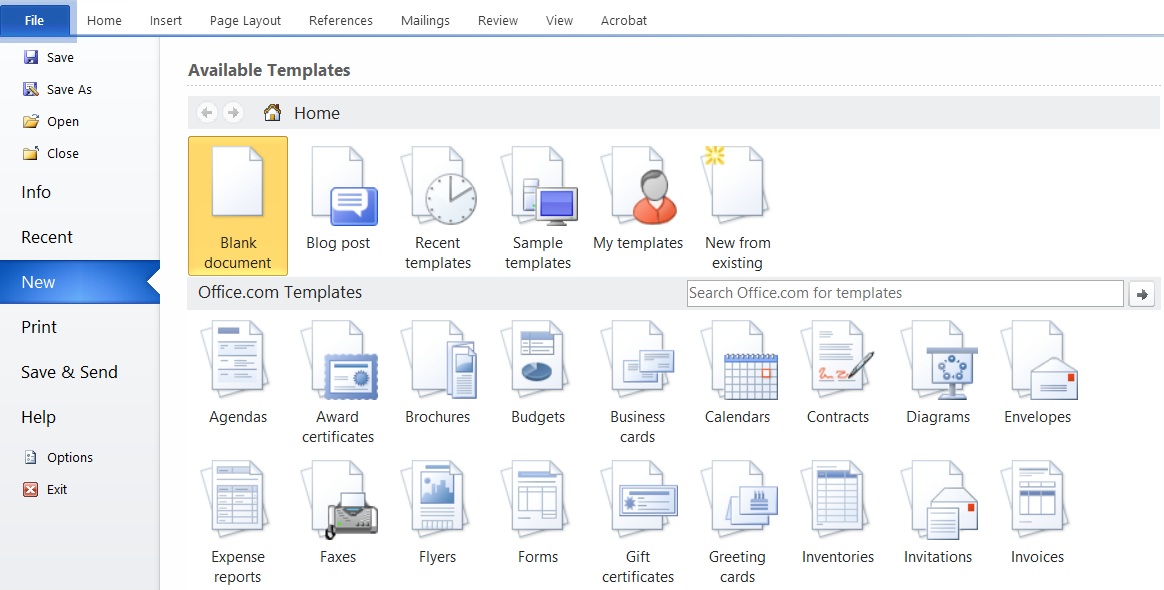
You can format text, adjust fonts, alignment, and more using the toolbar at the top. Enhance your documents by inserting images, charts, and other media through the “Insert” menu.
Regularly save your work by clicking “Save” or “Save As” to prevent data loss. When your document is ready for distribution, utilize the “Print” option to configure printing settings like paper size and orientation.
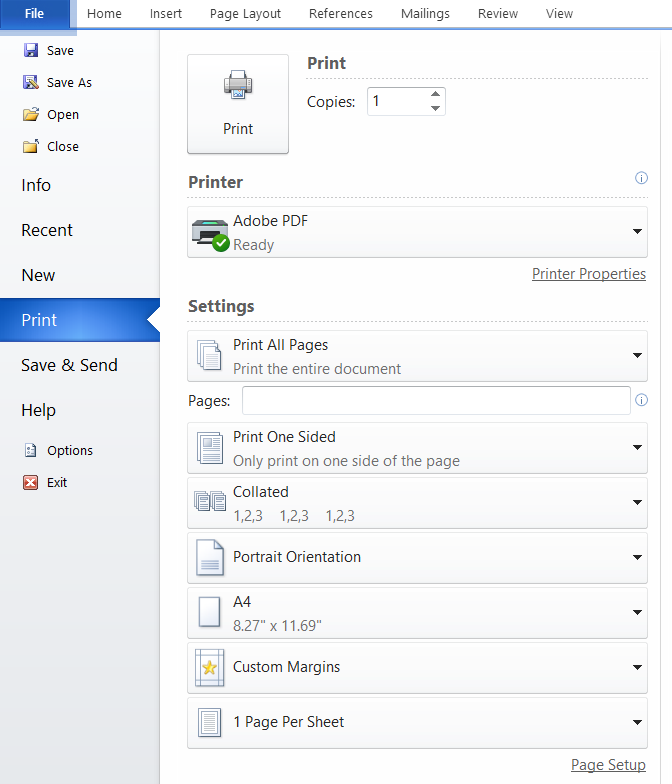
As you explore the capabilities of Microsoft Word, remember that maintaining the overall health and performance of your computer is crucial. With Auslogics BoostSpeed, you can ensure that your system runs at its best, allowing you to use Microsoft Word and other applications smoothly and efficiently.

Main Microsoft Word Issues and Fixes
Now, after exploring how to use Microsoft Word effectively and satisfying the curiosity of those wondering, “What is Microsoft Word used for?” we’ll take a quick look at solutions to address common issues frequently encountered in Microsoft Word. For detailed solutions, follow the links provided.
Why Is Grammarly Not Showing in Microsoft Word?
Grammarly not showing up in Word can be due to several reasons. To address this issue:
- Ensure Installation: Firstly, make sure you have Grammarly’s Word add-in installed. You can find it on the Grammarly official website or the Add-Ins section of Word.
- Enable/Disable Add-In: Sometimes, disabling and re-enabling the Grammarly add-in can help refresh its connection to Word. You can find this option in Word’s add-in management.
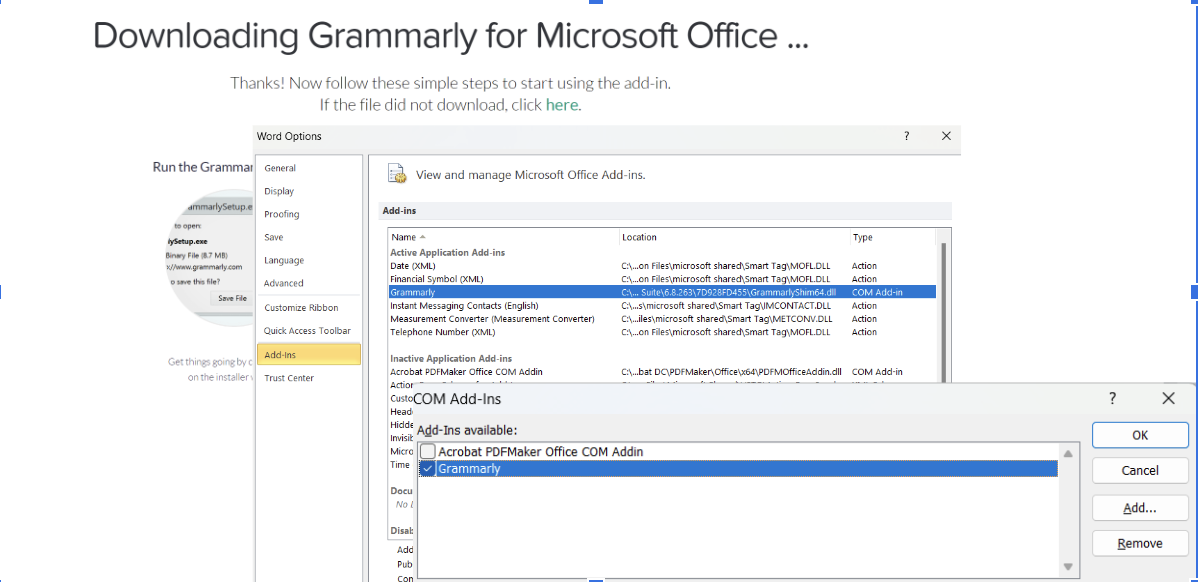
- Keep Word Updated: Ensure that your Microsoft Word application is up to date, as compatibility issues can sometimes cause add-ins like Grammarly to malfunction. Regular updates can help resolve these compatibility issues.
For an in-depth guide on addressing the issue, we recommend visiting our article that provides detailed steps and solutions to help you seamlessly integrate Grammarly with Microsoft Word.
How to Change Default Font in Microsoft Word
Microsoft Word offers a vast array of fonts, giving you the flexibility to customize your own default font. Here’s how to change it:
- Create New Document: Click on “File” in Word and select “New,” then choose “Blank document” and select “Create.”
- Set Default Font: In the Font section, access the font flyout. Customize your font and click on “Set As Default.”
- Save Changes: Opt for “All documents based on the Normal template?” and click on “OK.” Your default font is now updated according to your preferences.
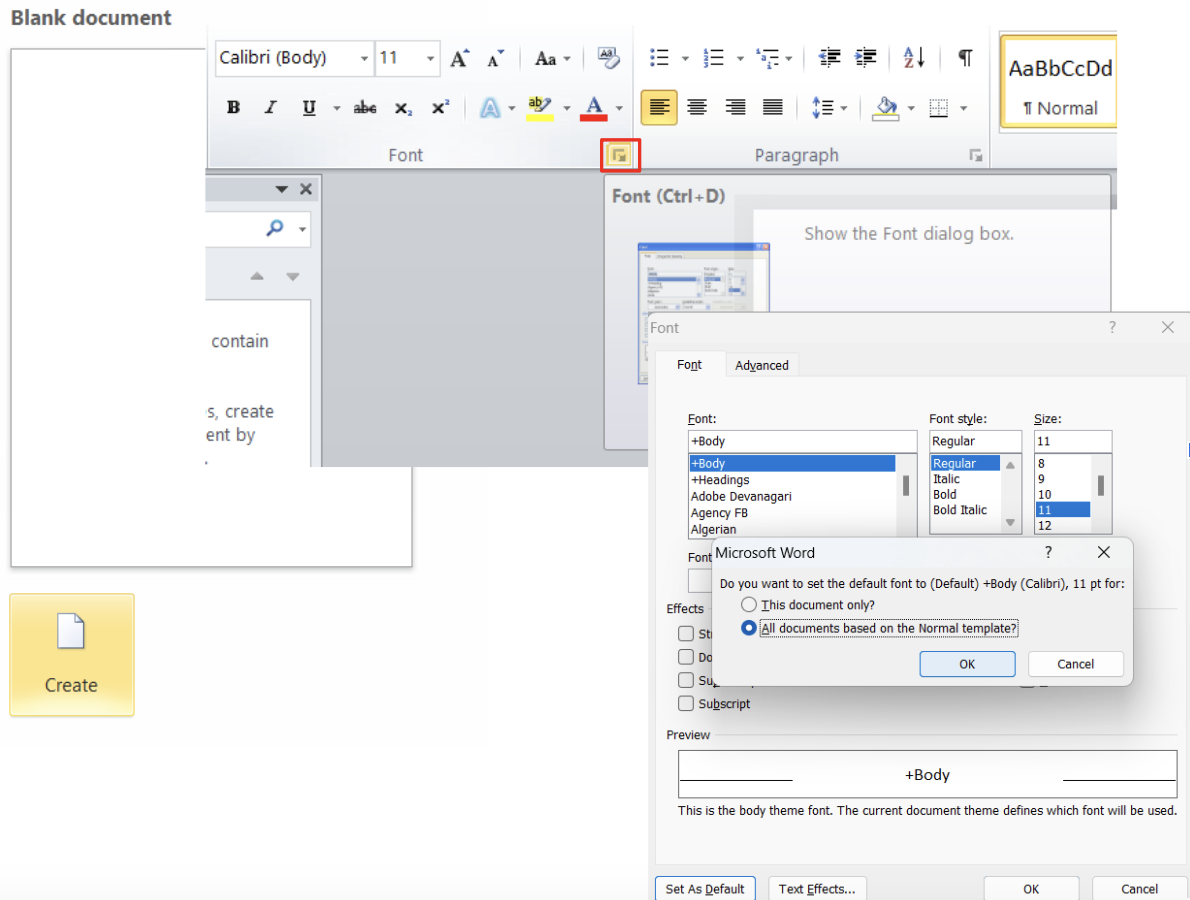
For more comprehensive guidance on how to change the default font in Word, including detailed steps and insights, we invite you to explore this article.
How to Reduce the Size of a Word Document
If you are, like other users, worried about exceeding the Word document file size limit, this one’s for you.
The maximum size for a Microsoft Word document is 512 MB, while the maximum text size is limited to 32 MB. That said, reducing the size of a Word document can be beneficial for sharing and storage. To make your document smaller:
- Compress Images: If your document contains images, consider compressing them. Click on an image, go to the “Format” tab, and select “Compress Pictures.” Choose the desired resolution to reduce file size.
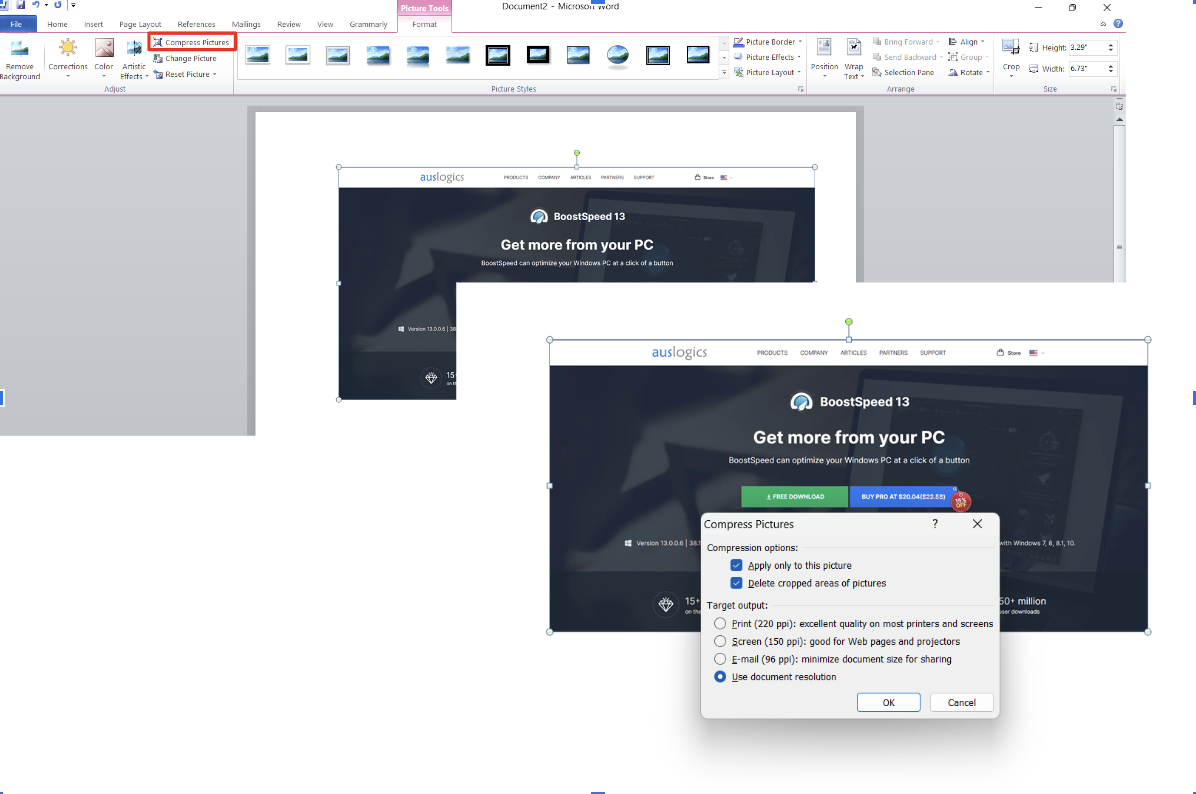
If you are, like other users, worried about exceeding the Word document file size limit, this one’s for you.
The maximum size for a Microsoft Word document is 512 MB, while the maximum text size is limited to 32 MB. That said, reducing the size of a Word document can be beneficial for sharing and storage. To make your document smaller:
- Compress Images: If your document contains images, consider compressing them. Click on an image, go to the “Format” tab, and select “Compress Pictures.” Choose the desired resolution to reduce file size.
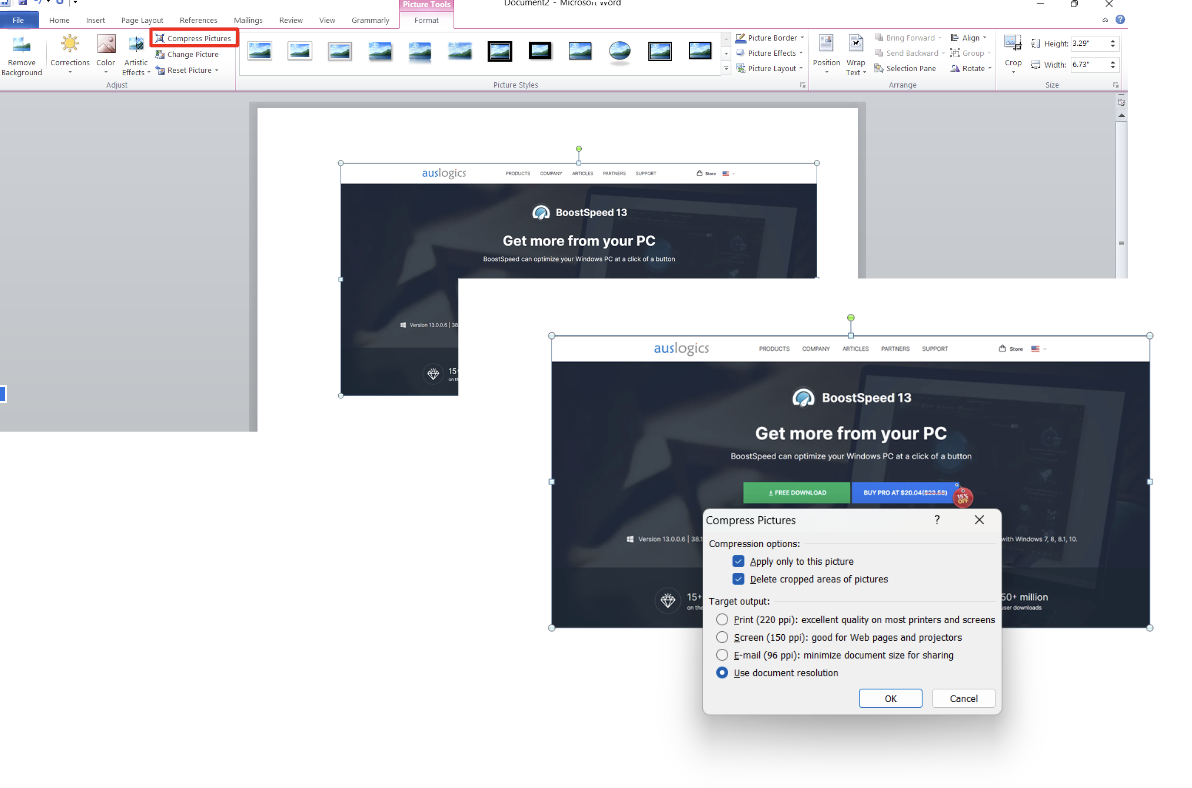
- Remove Unnecessary Content: Review your document and eliminate any unnecessary text, images, or elements that add bulk without adding value.
- Convert to PDF: Another effective way to reduce document size is to save it as a PDF. PDFs are generally smaller and preserve formatting.
By implementing these steps, you can significantly decrease the size of your Word documents, making them more manageable for sharing and storage.
For a more detailed exploration, we invite you to check our dedicated article that provides step-by-step instructions on how to reduce the size of a Word document.
How to Protect Specific Parts of a Word Document from Editing
If you need to share a document but want to restrict certain parts from being edited, follow these steps
- Mark Areas for Protection: Select the text or elements you want to protect and go to the “Review” tab. Click on “Restrict Editing” and choose “Allow only this type of editing.”
- Set Editing Restrictions: In the same menu, specify the type of editing allowed, such as formatting, comments, or tracked changes.
- Apply Protection: Finally, click “Yes, Start Enforcing Protection” and enter the password if you’ve set one. Your document is now protected, and only authorized changes can be made.
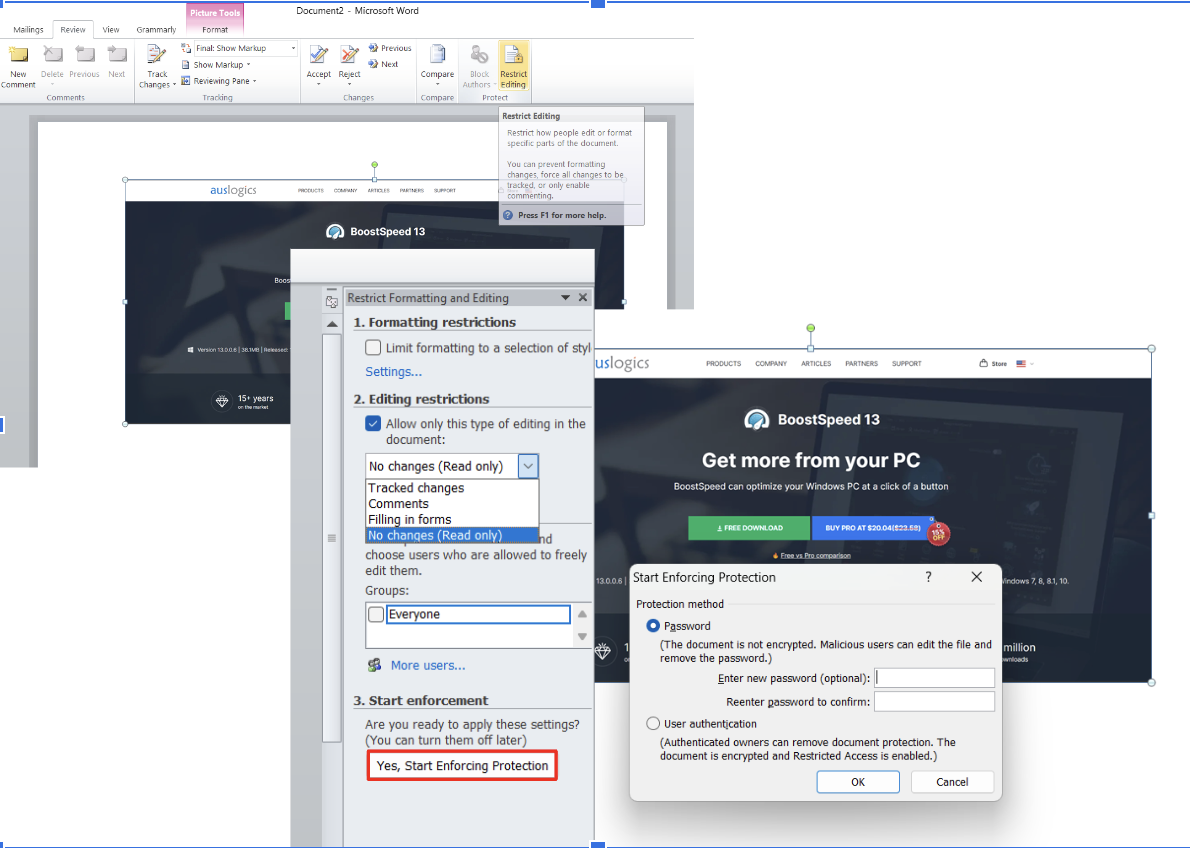
By utilizing these steps, you can control the editing permissions of your Word document, safeguarding your work as needed.
Feel free to explore this article to learn in detail how to protect a Word document from editing.
How to Repair and Recover a Corrupted Microsoft Word File
If you encounter a corrupted Microsoft Word file, you can attempt to repair and recover it:
- Open Word: Launch Microsoft Word.
- Select Recent: In the sidebar, under the File menu, you’ll find a section called “Recent.” Click on it.
- Recover Unsaved Documents: At the bottom of the Recent tab, you’ll see an option to “Recover Unsaved Documents.” Click on it to access your unsaved work.
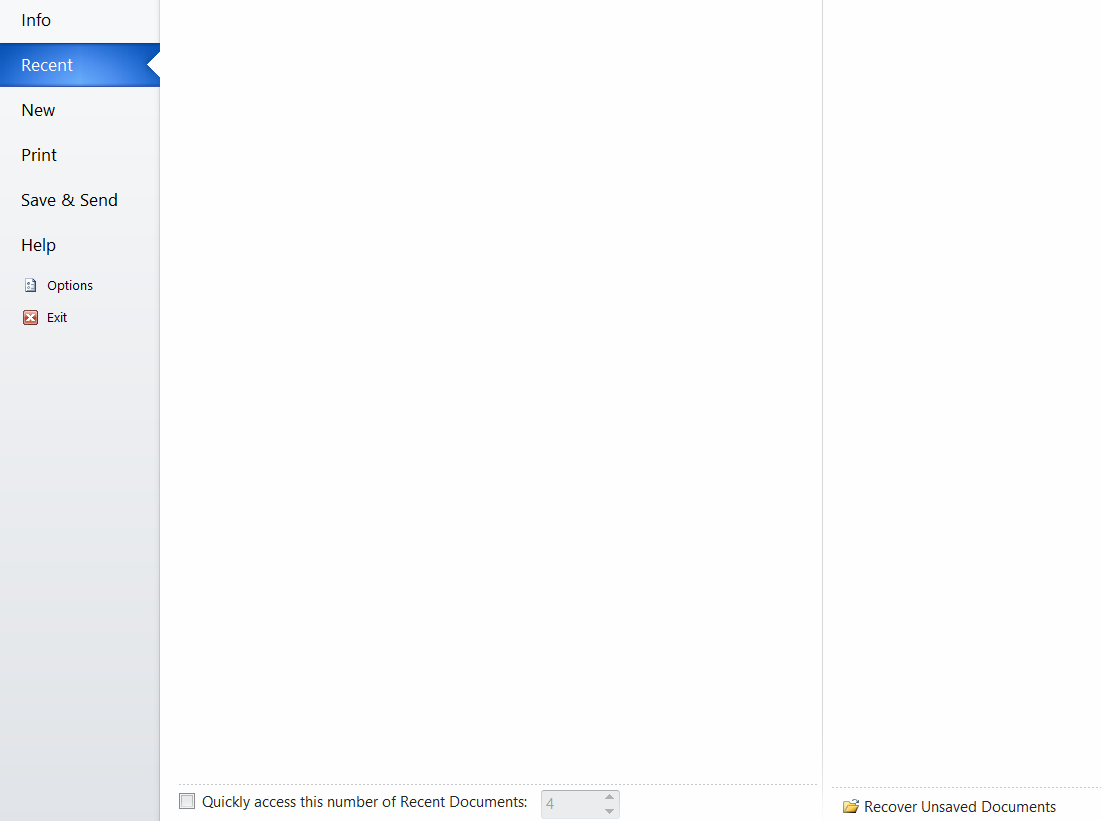
- Save Your Document: Once you’ve found the unsaved document, save it immediately to prevent further data loss.
By following these steps, you can often recover unsaved documents and minimize the impact of unexpected disruptions.
For an in-depth guide on how to recover a Microsoft Word document and repair a corrupted Microsoft Word file, delve into our dedicated article.
How to Reset Microsoft Word to Default Settings
If Microsoft Word is acting up or you want to start with a fresh configuration, you can reset it to default settings:
- Access Settings: Click the Start button in the taskbar, and then select Settings.
- Find Apps: In the Settings window, click on Apps.
- Locate Microsoft Word: Under the “Apps & features” or “Installed apps” section, find and select Microsoft Word in the list of installed apps.
- Reset and Confirm: Click Advanced options under Microsoft Word, and in the new window, click the Reset button. Confirm the action in the subsequent dialog to reset Microsoft Word to its default settings.

This process will reset Microsoft Word to its original configuration, removing any custom settings or preferences.
One potential reason for Microsoft Word misbehaving is the presence of malware on your computer. Malicious software can disrupt the proper functioning of your applications.
Protect your system from malware threats with Auslogics Anti-Malware, a powerful tool designed to detect and remove a wide range of malicious content, ensuring your computer and software, including Microsoft Word, operate smoothly and securely.

Conclusion
In this guide we addressed various questions like “What is Microsoft Word?” and “What is Microsoft Word used for?” as well as delved into some common issues that its users face.
We established that Microsoft Word is versatile and indispensable software that serves a multitude of purposes. Understanding how to use Microsoft Word effectively is essential for creating and editing documents with ease. By mastering its features you can enhance your productivity and achieve seamless document management.
FAQ
How Often Should I Update Microsoft Word?
Regular updates for Microsoft Word are recommended to access new features, security patches, and bug fixes. Check for updates at least once a month or enable automatic updates for the latest improvements.
Can I Recover a Document That I Accidentally Closed Without Saving?
Yes, you can often recover unsaved documents in Word. Go to the “Recent” section, click “Recover Unsaved Documents,” and save the document once it’s retrieved to prevent further data loss.
Are There Keyboard Shortcuts for Common Word Tasks?
Yes, Word offers various keyboard shortcuts for tasks like saving, copying, pasting, and formatting. Using shortcuts can save time and boost productivity.
Is It Safe to Use Microsoft Word Online And on Mobile Devices?
It’s generally safe to use Word online and on mobile devices. Download apps from official sources, keep them updated, secure your account, be cautious with email attachments, and consider additional security measures for sensitive data.
By following the tips and solutions provided in this article, you can make the most of Microsoft Word and overcome common issues with ease. Whether you’re a seasoned user or a newcomer, these insights will help you work efficiently with this powerful word processing software.



